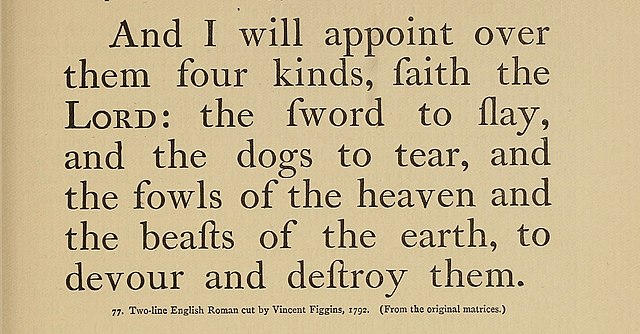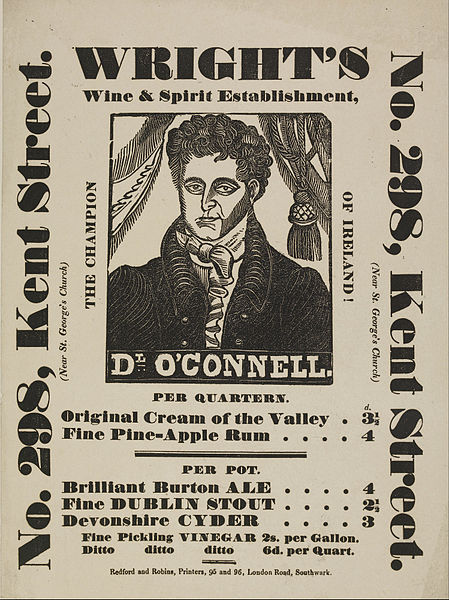Vincent Figgins was a British typefounder based in London, who cast and sold metal type for printing. After an apprenticeship with typefounder Joseph Jackson, he established his own type foundry in 1792. His company was extremely successful and, with its range of modern serif faces and display typefaces, had a strong influence on the styles of British printing in the nineteenth century. A successor company continued to make type until the 1970s.
Engraved portrait of Joseph Jackson, Figgins' master.
The Common Council Chamber at the Guildhall, pictured in 1808
Radical candidate Henry Hunt (speaking, left) in an 1818 cartoon. Ten years later he unsuccessfully ran against Figgins for election. Figgins described him as a "shameless fellow".
Figgins' 1792 type in the transitional style.
Didone is a genre of serif typeface that emerged in the late 18th century and was the standard style of general-purpose printing during the 19th century. It is characterized by:Narrow and unbracketed (hairline) serifs.
Vertical orientation of weight axes.
Strong contrast between thick and thin lines.
Some stroke endings show ball terminals.
An unornamented, "modern" appearance.
Didot's type in the Code civil des Français, printed by the company of Firmin Didot in 1804.
Two pages from Bodoni's Manuale Tipografico, a posthumous showcase of his work and engraving by his wife.
The 1861 title page of Great Expectations in the sharp, high-contrast Didone type of the period. Popular at the time, the style had disappeared almost completely by the middle of the twentieth century.
Fat face type on a poster. London, c. 1840s








